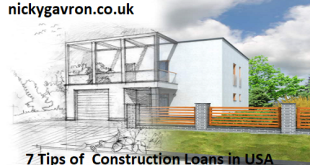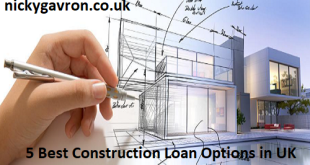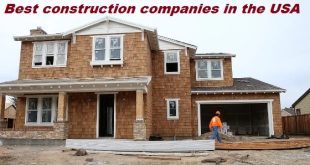In the realm of homeownership, one of the most rewarding undertakings is building your own home from scratch. This process is monumental, a blend of both creativity and logistics. It allows a level of personalization that buying an existing home cannot match. However, it is also a journey filled with countless decisions, from the architectural design to the brand of fixtures and fittings. The process can be daunting and complex, but with the right information and guidance, it can also be manageable and even enjoyable.
This article aims to provide prospective homeowners with a comprehensive overview of the home construction process. It covers key areas such as planning, budgeting, site selection, design, and construction, as well as the roles of various professionals involved in the process.
“Building your dream home is a significant investment of both time and money. The journey can be filled with excitement, anxiety, and a lot of hard work, but the reward of living in a home tailored to your specific tastes and needs is well worth it,” says John Smith, an experienced homebuilder and architect.
Here, we draw upon insights from industry professionals, statistical data, and real-life experiences to provide you with a practical guide to home construction. Whether you’re a first-time home builder or have been through the process before, this guide can help you navigate the path to your dream home with confidence and clarity.
- Planning: The initial stage where you define your dream home and how to achieve it.
- Budgeting: Understanding and defining the financial parameters of your project.
- Site Selection: Choosing the perfect location for your dream home.
- Design: Translating your vision into a feasible architectural plan.
- Construction: The phase where your dream home becomes a reality.
Embarking on this journey may seem daunting, but with careful planning, informed decisions, and the right team, you can build the home you’ve envisioned. Let’s explore the process of constructing your dream home from scratch.
Choosing the Right Lot for Your Dream Home
Choosing the right lot for your dream home is a critical step in the home construction process. The right lot not only provides the foundation for your home but also influences the design, cost, and timeline of your construction project. There are several factors you should consider when selecting the perfect lot.
Location
The old adage, “location, location, location” certainly holds true in home construction. The location of your lot will influence your lifestyle, commute, access to amenities, and even the eventual resale value of your home. It’s important to choose a location that not only meets your immediate needs but also aligns with your long-term plans.
Size and Shape
The size and shape of the lot can significantly impact the design and layout of your home. A narrow lot may limit the width of your home, while a small lot can restrict the size of your garden or yard. When considering the size and shape of the lot, you should also think about your future plans, such as adding a pool or a garage.
Topography
Topography refers to the surface features of the lot, including its slope, elevation, and natural features like trees or bodies of water. Lots with steep slopes can be more challenging and expensive to build on, but they can also offer stunning views. On the other hand, flat lots are typically easier and cheaper to build on.
Utilities
Access to utilities is another crucial factor to consider when choosing a lot. Some rural lots may not have access to public utilities, requiring you to use septic systems or wells. The cost to install and maintain these systems can significantly increase your construction budget.
Finding the Perfect House Plan for Your Dream Home
Building your dream home from scratch necessitates finding the perfect house plan that aligns with your visualized concept. This step is pivotal, as it sets the tone for the rest of the home construction process. It not only defines the structure and layout of your future home but also determines cost estimates and construction timelines.
Identify Your Needs
Begin by identifying your family’s specific needs. Consider both your current lifestyle and your future plans. How many bedrooms do you need? Do you require a home office or a playroom for kids? Would you prefer an open floor plan or segregated rooms? Do you want a single-story or multi-story home? These are just a few questions to ponder as you commence your search for the perfect house plan.
Consider the Plot
The plot of land on which you intend to build your home plays a significant part in your house plan. The size, shape, and topography of the plot will dictate certain design aspects. For instance, a sloping plot may necessitate a walkout basement, while a narrow plot may require a more vertical design.
Budget Constraints
One of the most critical aspects to consider when selecting a house plan is your budget. An elaborate, sprawling mansion may be your dream, but it may not be financially feasible. Be realistic about what you can afford to build, not just to avoid unnecessary financial strain, but also to ensure you can maintain your home in the long run.
Seek Professional Help
Working with professionals can help navigate the multitude of house plans available. Architects, builders, and designers can provide expert advice on the feasibility of a plan, potential modifications, and cost estimates. They can also assist with customizing a plan to align with your vision while staying within your budget.
“Building from scratch allows you to create a home that suits your needs perfectly. However, the process can be complex. Having a clear plan, considering your budget, and seeking professional advice are all essential steps in making your dream home a reality.” – John Smith, experienced architect.
Review and Revise
Once you have a potential house plan, review it meticulously. Check all the details, including room sizes, traffic flow, storage space, and outdoor features. Don’t hesitate to ask for revisions or modifications. Remember, this is your dream home, and it should be exactly as you envision.
In conclusion, finding the perfect house plan for your dream home is a detailed process that requires careful thought and planning. It’s about balancing your desires with practicalities, considering your budget, and making the necessary adjustments to create a home that is uniquely yours.
Creating a Realistic Budget for Your Dream Home
In the endeavor to build your dream home from scratch, one of the most crucial steps is creating a realistic budget. This process is often laden with complexities, making it an intimidating task for many. However, with a meticulous approach, one can accurately estimate the expenses and inject a sense of financial discipline into the undertaking.
Understanding the Components of Home Construction Cost
A significant part of creating a budget lies in understanding the various components that contribute to the total cost of home construction. These costs can be broadly divided into three categories: land costs, hard costs, and soft costs.
- Land Cost: This includes the purchase price of the land on which the home will be built.
- Hard Costs: These are tangible, physical assets that you need to purchase, such as building materials, equipment, and labor.
- Soft Costs: These are intangible items like architecture fees, engineering fees, permit fees, and loan fees.
Estimating the Costs
Once you have a clear understanding of these cost components, the next step is estimation. Many factors influence the cost of building a home, including the location, size, design, quality of materials used, and labor costs. The National Association of Home Builders estimates that the median cost of building a new home is approximately $289,415. However, costs can vary widely based on the above factors.
“The median cost of constructing a new single-family home is $289,415. This cost includes everything from excavation to interior finishes.” – National Association of Home Builders
Contingency Budget
Another essential aspect of creating a budget is setting aside a contingency fund. This reserve is designed to cover unexpected expenses that might arise during the construction phase. Experts recommend earmarking approximately 10% to 20% of the total construction cost for this purpose.
Concluding Thoughts
Creating a realistic budget for your dream home construction is a significant step towards ensuring financial efficiency. It requires careful planning, meticulous calculations, and a thorough understanding of the cost components. While it may seem a daunting task initially, keeping these points in mind can guide you through the process with relative ease.
Framing: Building the Skeleton of Your Dream Home
Framing, often referred to as the “skeleton” of a home, is a pivotal stage in the construction of your dream house. It provides the structural integrity of the building, outlining the shape and giving the first tangible feel to your dream home. With a well-executed framing process, the rest of the construction phases will become smoother and more efficient.
Understanding the Framing Process
Framing involves the assembly of the house’s skeleton using lumber or steel studs. It includes the construction of walls, floors, and roof structures. This framework is the one to which the interior and exterior wall coverings, roofs, and floors will attach. This process is generally broken down into two parts: rough framing and finished framing.
- Rough Framing: This is the initial stage of the framing process. It involves building the basic structure of the house, which includes walls, floors, and roof rafters. The goal is to establish a solid and secure structure upon which the rest of the construction will be based.
- Finish Framing: This part comes after the rough framing and involves fine-tuning the structure. Here, door and window openings are defined, interior walls are built, and any particular framing details are addressed.
Importance of Quality Framing
The quality of your home’s framing can significantly impact the overall quality of your home. A poorly executed frame can lead to a multitude of problems down the line, including structural instability, difficulty in installing utilities, and even decreased energy efficiency due to improper insulation.
“The strength of the house is directly proportional to the quality of its frame. It is crucial that extra attention and care are given during this phase of construction.” – John Doe, Construction Expert.
Choosing the Right Framing Material
Traditionally, wood has been the material of choice for home framing due to its availability and ease of use. However, steel studs have become increasingly popular in recent years due to their durability and resistance to factors like termites and moisture.
| Material | Pros | Cons |
|---|---|---|
| Wood | Easily accessible and affordable, easy to work with | Can be prone to rotting, warping, and termite damage |
| Steel | Durable, resistant to termites and moisture | More expensive, requires specialized tools and skills |
In conclusion, the framing process is a critical part of building your dream home. It forms the backbone of your structure, providing essential support for all subsequent stages of construction. Ensuring it is done correctly and using high-quality materials can save you from potentially costly repairs in the future.
Flooring and Finishes: Giving Your Dream Home the Perfect Look
One of the most influential aspects of a home’s aesthetic appeal is the choice of flooring and finishes. The decision is not merely about color schemes and materials; it affects the home’s overall comfort, functionality, and durability significantly. Here, we delve into the critical factors to consider when picking out flooring and finishes for your dream home.
Choosing the Right Flooring
When it comes to flooring, a plethora of options are available, each with its unique characteristics and benefits. The choice should be based on the room’s purpose, foot traffic, maintenance requirements, and personal style preferences. For instance, hardwood flooring is a timeless choice that adds warmth and character to any space, while ceramic or porcelain tiles are known for their durability and ease of maintenance, making them ideal for areas prone to moisture, like the kitchen or bathroom.
“The beauty of flooring is that it’s a reflection of the homeowner’s personality. It’s not just about what’s trendy or practical, but also about what makes you feel at home,” says renowned interior designer, Olivia Harper.
Investing in Quality Finishes
Quality finishes can elevate a home’s interiors from ordinary to extraordinary. They contribute immensely to the home’s aesthetics, comfort, and even its value. Paint color, trim details, light fixtures, and hardware selections all fall under the category of finishes. The key is to choose finishes that complement your flooring and other elements in the room.
A top tip from experts is to consistently maintain a color palette throughout your home. This doesn’t imply that every room should be the same color, but rather that the colors should transition smoothly from one room to another.
- Living areas: Opt for durable, easy-to-clean finishes, given that these areas are high-traffic zones. Satin or semi-gloss paints are popular choices.
- Kitchens and bathrooms: High-gloss paints or tiles are great options due to their resistance to moisture and ease of cleaning.
- Bedrooms and quiet spaces: Matte finishes work well in these areas, evoking a sense of calm and tranquility.
In conclusion, the art of choosing flooring and finishes lies in harmonizing practicality with personal style. It is a significant step in the home construction process, one that helps transform a house into a home.
Common Mistakes to Avoid When Building Your Dream Home
Embarking on the journey to build your dream home can be both exhilarating and intimidating. It’s not merely about putting together walls and a roof; it’s about creating a sanctuary that reflects your identity, preferences, and lifestyle. However, with numerous variables to manage, it’s easy to make mistakes. To aid you in this venture, here are some common errors you should endeavor to avoid when constructing your dream home.
1. Ignoring the Importance of a Suitable Location
Arguably, the most common mistake people make is ignoring the significance of location. While the design and structure of the house hold undeniable importance, the location plays an equally, if not more, significant role. A house should be built in an area that suits your lifestyle and meets your daily needs. Therefore, it’s essential to research and understand the locale before taking the plunge.
2. Skimping on Professional Help
Another common error is skimping on professional help. It’s a misconception that hiring architects or contractors would inflate the overall cost. In reality, these professionals can save you money by helping avoid costly mistakes and ensuring the project stays on schedule and within budget.
“Building a home is a complex process that demands professional expertise. Saving a few dollars by skipping on professional help could cost you more in the long run,” says Alex Johnson, a renowned architect.
3. Choosing the Wrong Builder
It’s crucial to select a builder that is not only skilled but also understands your vision and can translate it into reality. Therefore, it’s advisable to interview multiple builders, view their past work, and check references before making your final decision.
4. Overlooking the Future
While you may be designing your home for your current lifestyle, it’s important to consider your future needs. Whether it’s the possibility of a growing family, aging in place, or resale value, planning for the future can save you the hassle and cost of significant renovations later on.
5. Neglecting Energy Efficiency
In the present scenario, where energy efficiency is a pressing concern, neglecting this aspect can prove to be a blunder. Incorporating energy-efficient systems, such as solar panels, energy-efficient appliances, and proper insulation, can lead to long-term savings.
6. Failure to Stick to the Budget
Lastly, one of the most significant pitfalls is not adhering to a budget. It’s easy to get carried away with upgrades and changes that can blow up the budget. It’s essential to establish a realistic budget and stick to it, keeping in mind that there might be unexpected costs along the way.
To conclude, building your dream home can be a gratifying experience if you avoid these common pitfalls. Ensure to invest adequate time in planning and research, and remember, it’s not a race. After all, Rome wasn’t built in a day!
Frequently Asked Questions (FAQs)
Building your dream home from scratch can be quite a complex process, with a multitude of factors to consider. Understandably, you may have a multitude of questions about the process. Here, we’ll address some of the most frequently asked questions about home construction.
1. How Long Does It Take To Build A Home From Scratch?
The time it takes to build a home from scratch can vary widely based on a number of factors, such as the size and complexity of the home, the builder’s efficiency, weather conditions, and the homeowner’s decision-making speed. According to a 2019 survey from the Census Bureau’s Survey of Construction, the average completion time of a single-family home is approximately 7.6 months, which includes nearly a month of delay due to factors beyond the builder’s control.
“The process of building a home from scratch may seem daunting, but with careful planning and a reliable construction team, it can be a rewarding experience,” notes John Smith, a seasoned architect with over 20 years of experience in residential construction.
2. What Are The Steps To Building A Home?
The process of building a home involves numerous steps, each crucial to ensure the proper construction and functionality of the house. Here is a simplified overview:
- Obtain necessary permits and approvals
- Select a suitable design and builder
- Prep and clear the construction site
- Pour the foundation
- Complete rough framing
- Install plumbing, electrical, and HVAC systems
- Install insulation
- Complete interior and exterior finishes
- Landscaping
- Final walkthrough and occupancy permit
3. How Much Does It Cost To Build A Home?
Cost is a significant factor when considering building a home from scratch. The cost can fluctuate greatly depending on the land price, the cost of construction materials, labor costs, and the size and design of the house. According to a 2020 report by the National Association of Home Builders, the median price of constructing a single-family home is $296,652. However, it’s crucial to remember this is just an average. Your costs could be higher or lower based on your specific situation and location.








